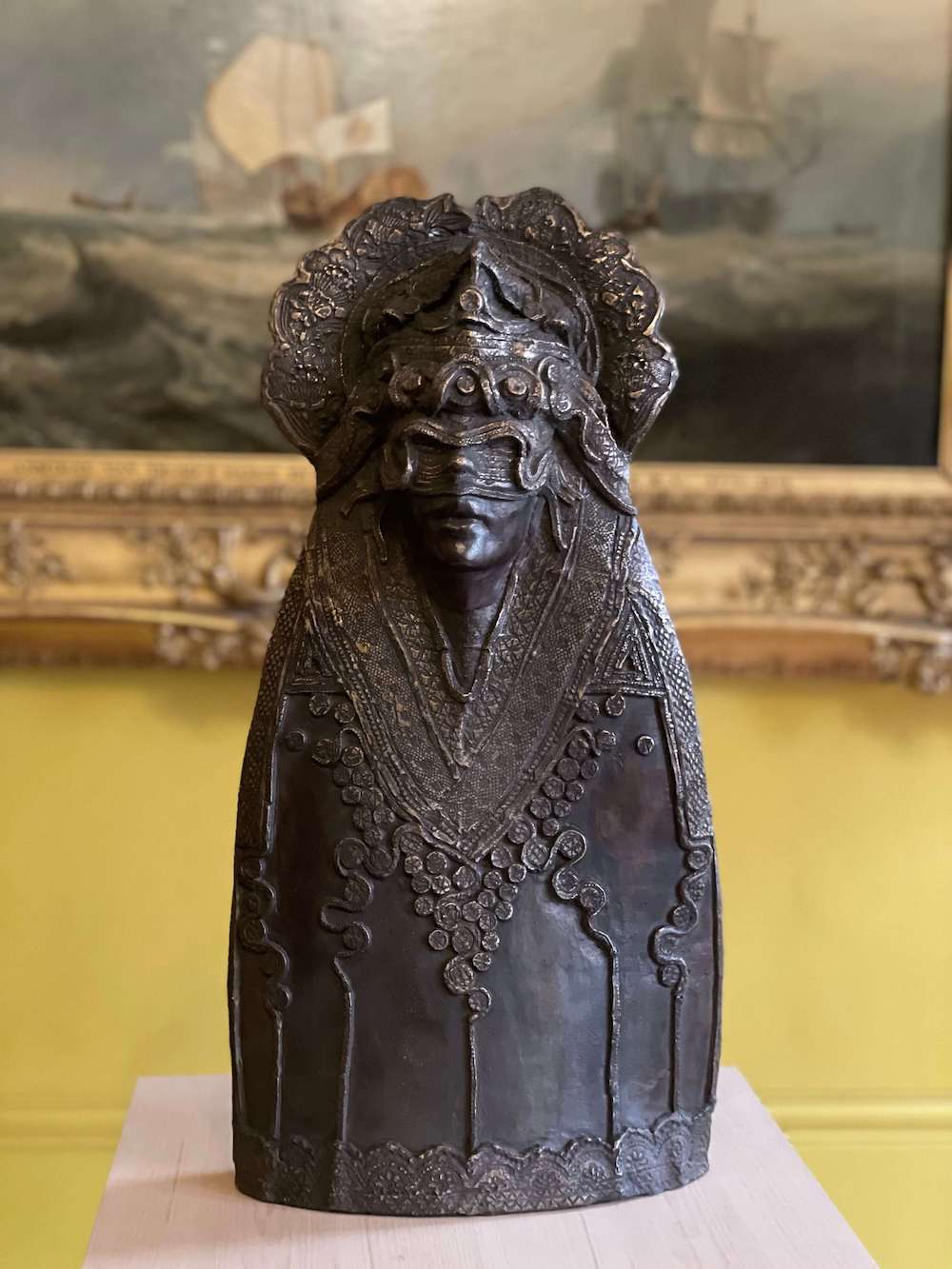The First Bronzes reveals the newest body of work by the sculptor Tancredi di Carcaci. Conceived by Daniel Malarkey, the exhibition presents di Carcaci’s first investigation of the medium of bronze that allowed him to elevate his sculptural work to a level more expressive and powerful than ever before. Through bronze, the artist delves even deeper into the magic of semiotics, radically altering the canonical representation of Madonna and marking an exhilarating new step in his artistic path. Di Carcaci’s sculptures are exquisitely nestled within the extraordinary environment of Sir John Soane’s Museum, whose eclectic collection of antiquities, sculptures, drawings and paintings provides an organic counterpart to the contemporary works of a young creator.
It would be challenging to imagine a more fitting environment to introduce to the world The First Bronzes by Tancredi di Carcaci than the North Drawing Room of the Sir John Soane’s Museum. The room that has long been the inspiration to a plethora of innovative, radical contemporary artists, among whom is Sarah Lucas whose 2015 British Pavilion in Venice was inspired directly by the infamous Turner Yellow of the room’s interior, acts as a flawless backdrop to di Carcaci’s first investigation of the medium of bronze.
The two creations of Tancredi di Carcaci are also not the first contemporary sculptures of devotional nature to invade the realm of this nineteenth century aesthetic: in 1999 Hans Ulricht Obrist positioned yellow Madonna by Katharina Fritsch (1989) in the ante-room as part of Remember Tomorrow exhibition. Tonight, standing resolute in the centre of the space, surrounded by the architectural blueprints and drawings of Sir John Soane, Di Carcaci’s Byzantine Madonna and Masked Figure each evoke the vision of a Protector and a Warrior. The notions conventionally reserved for male representation are bestowed upon the symbols of motherly love and devotion. Walking in the footsteps of Sarah Lucas, who brought her Muses, three waist-down casts of female nudes, to Sir John Soane’s Museum following the Venice Biennial to confront the traditional representation of the female form, Tancredi di Carcaci presents us with another dichotomy. The artist initiates an intriguing conversation between the historical collection of antiquities, sculptures, and drawings of the museum and the contemporary perception of the canonical iconography of the image of Madonna.
Clad in armour, the silent figures are commanding in their tranquillity. Their facial features are not incontestably feminine: a pronounced jaw line of the Masked Figure suggests more fluid reading of the works, an inclination Tancredi readily admits: “I have defiantly found myself drawn more to depicting more androgynous figures facially, but I usually imagine them as females”. Masked Figure’s forceful expression counterbalances the translucency of lace adorning her mask and headpiece, as well as the ornamental intricacy of the fabric. In direct juxtaposition to numerous plaster casts of classical female form within the collection, Di Carcaci’s Madonnas force the viewer to alter their perception of what ‘a Woman in art’ is.
The posterior of Byzantine Madonna is graced by a representation of the eleventh century mosaic depicting an offering to Christ by the empress Zoe and her husband, Constantine IX Monomachos, transferred by the artist from the walls of Hagia Sophia. The front of the sculpture, however, was inspired by the remarkable Adoration of the Magi of Gentile da Fabriano. The lavishly decorated altarpiece, originally executed for a Florentine man of letters highly versed in the Byzantine culture, Palla di Noferi Strozzi, is renowned for a great level of detail and intricacy of the artist’s hand. The titanium patina of the bronze recontextualises the imagery in tune with the architectural features of the Sir John Soane’s Museum building in an ensemble echoing the density of its space.
The omission of physical bodies of the Saints relieves the work from the individual narratives, retaining solely the notion of sacrifice embodied by the garments, while the braiding of the Byzantine Madonna’s headpiece symbolises the strength in Unity. Tancredi di Carcaci’s first bronzes represent a meaningful step and a fresh dimension in the artistic development of the young sculptor, widely renowned for his effortless ceramic masterpieces. The new medium allowed Tancredi di Carcaci to elevate his work to a level more expressive and powerful than ever before. A direct dialogue between the young artist and the renowned architect and collector, Sir John Soane, not unlike the dialogue between two collaborators, is capable of not only enhancing the viewer’s understanding of both masters, but also of bringing to light an extra dimension to their aesthetic, invisible otherwise.
You can view more details about the exhibition here.

